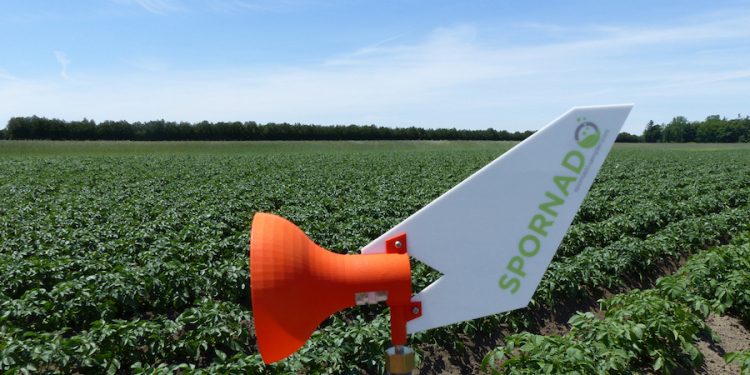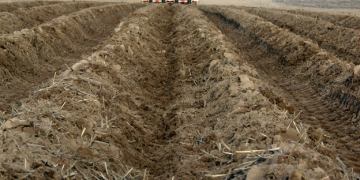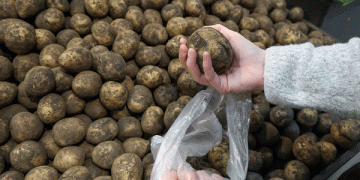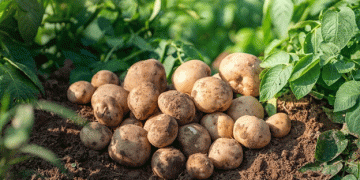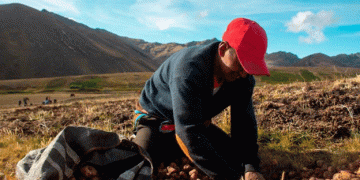Potato growers on P.E.I. are turning to technology to help them track spores from late blight and other airborne diseases that could damage their crops. One of the companies doing the monitoring on P.E.I. is AIR Program, which uses spore trapping as well as a weather risk indicator, using a weather station installed next to the field.

‘We’re treating it as an early warning system’
The spore traps are monitored three times a week — every Monday, Wednesday and Friday. “A spore trap is the equipment we use to be able to collect spores in the fields,” said Daniel Mondor, sales and marketing director for the company. “Based on the spores, which are the pathogen, you have a scientific evidence which will lead potentially to a disease.”
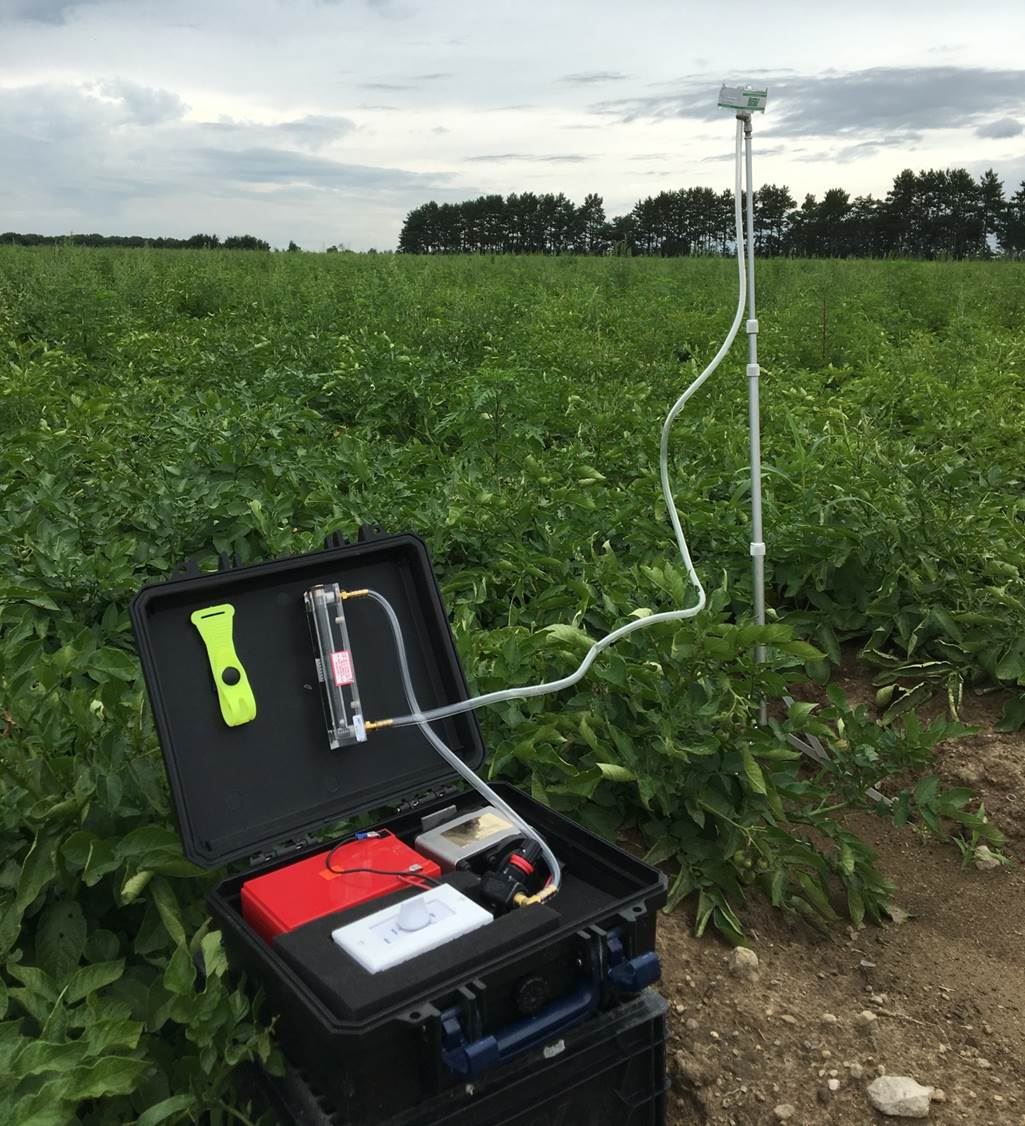
Better information
Mondor said growers have spraying schedules for treating their fields with fungicides to prevent diseases like late blight, and the spore trapping gives them better information on when they need to spray.
“We have a big responsibility and we enjoy that as microbiologists. We really love to monitor the disease,” Mondor said. “So we guarantee to the participant that we will see the spores if [there] are some. And with working the program since nine years, we never had any misinformation. So I’m super happy about that.”
Mondor said the company has not seen any spores from late blight on P.E.I. in the last three years.
“The last one we detected was in 2017 in New Brunswick, and we detected two weeks prior to the spraying calendar, so this way producers could act even faster in order to reduce the impact of a potential disease,” Mondor said. Mondor said AIR Program has more than 20 sites on P.E.I., and about 150 across North America.
‘I don’t want to spray’
Andrew Lawless, a sixth-generation potato farmer in Maple Plains, P.E.I., has been using the AirSpore technology for three years.
“I wanted to be able to make better decisions as far as managing our crop,” Lawless said. “Most importantly for the environment. If I don’t need to spray, I don’t want to spray. And this helps me make that decision, whether to go or not to go, and also what products to use. “If there’s no blight pressure around at all, I might extend my schedule to 10 days, or I might even go to two weeks,” Lawless said. Lawless said the technology does cost him money, but has also helped reduce some of the expense of spraying his fields.
“It’s huge. Each time we spray, it could be anywhere from $20 to $100 an acre, depending on the products we’re using,” Lawless said. “If we don’t have to go that week, and we can skip a week, it’s huge on the bottom line whenever you multiply it by the acres that we grow.”
Early warning network
The P.E.I. Potato Board is also using the spore trapping technology, setting up eight monitoring sites across the Island, using a program called Spornado, run by a company in Ontario called Sporometrics.
“The purpose is, can we do an early warning program or network across the province to detect late blight spores,” said Ryan Barrett, research and agronomy specialist with the board. “We know that late blight is potentially an economically damaging disease in potatoes. It can be very costly in terms of lost crop, and lost quality of crop.”
Barrett said the cartridges from the eight spore traps are taken out once a week, and sent to a lab in Ontario to be tested for late blight. He said he has seen the system work successfully in other provinces and states.
“For example, in Ontario, where they have been doing this for the last two or three years, they generally find the spores about five to seven days before they would find an actual infection in the crop,” Barrett said. “It’s sort of that early warning system. OK, we found spores, now’s the time to get our protective fungicides on, or monitor the crop for any signs of late blight.”

The project is being co-funded by the P.E.I. Potato Board and the provincial Department of Agriculture and Land.
“We’re funding that program as sort of a cross-province tool that all growers have access to,” Barrett said. “It all comes down to only spraying when we need the spray, only applying products when they’re needed, not just whenever,” Barrett said. “That has a benefit to the environment, and it has a benefit to the growers financially and time-wise. So it’s a win-win for everybody.”
